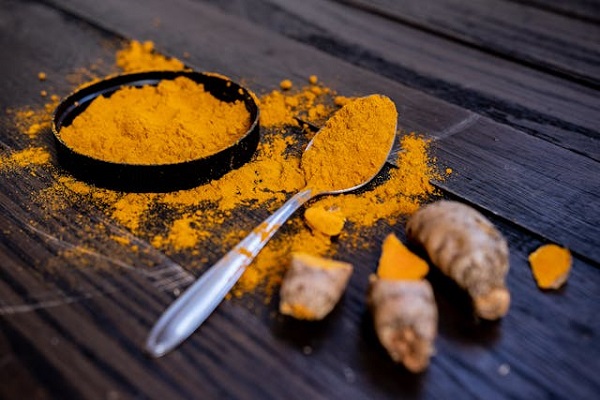Words: ThermoFisher SCIENTIFIC
Approximately 36 per cent of American adults use some form of complementary and alternative therapies. Are the experienced effects truly the herbs at play, individual genetics, or is it a placebo-effect, where the mind ‘cures’ the body out of anticipation of cure?
In ancient cultures, knowledge of traditional medicine, such as Ayurveda, was passed down for generations, either through oral tradition, or written texts. Ayurveda studies the human body in its entirety and recommends natural herbs as medicine for a specific ailment. Ayurveda medicine has been practiced in India for over 5,000 years. Ancient texts that describe this medicine date back to 1500 BCE.
Besides its historical use, traditional medicine is still practiced to this day in some parts of the world, and in recent years it has made its way into the doctor’s office. Even though there is scepticism about the use of traditional medicine, it isn’t uncommon for doctors to practice, or combine, Western medicine with naturopathy, complementary and alternative medicine, holistic medicine, or other types of traditional medicine. Over the years, scientists have been curious to understand the ‘mechanistics’ behind Ayurveda and how herbs interact with the body and exhibit a particular effect. But what if, there was some validity for the science behind this ancient knowledge? What if we can unravel the mysteries behind why and how traditional medicine works? With the technology at hand today, we may be closer than we think.
Recent Studies
In recent years, scientists have studied herbs like turmeric and Ashwagandharishta for their medicinal properties suggested in the ancient texts. Ashwagandharishta is primarily known for applications in neurological disorders, such as depression, epilepsy, and anxiety. Bhondave et al [2014], studied if Ashwagandharishta could help protect rat livers against CCl4 induced toxicity. With the the StepOne™ real-time qPCR system and the TaqMan™ gene expression assays and master mixes, the team observed upregulation of antioxidant enzymes, such as catalase [CAT] and glutathione peroxidase [GPx], and downregulation of IL-6, a pro-inflammatory cytokine. Their results show a possible mechanism of how Ashwagandharishta may provide hepatoprotection by preventing oxidative damage.
Turmeric [or, curcumin] has also been extensively studied for its anti-inflammatory properties. McCann et al [2014] highlight the in vitro effects of turmeric extract against two gene variants associated with inflammatory bowel disease [IBD] in HEK293 cells. Their results suggest that turmeric may beneficially affect two gene variants linked to IBD severity. Klawitter et al [2012] studied if turmeric may have an anti-inflammatory and anti-catabolic activity in inflammation related to discogenic back pain. Their RT-qPCR data suggest downregulation of pro-inflammatory cytokines. Although turmeric shows anti-inflammatory properties in vitro, further in vivo and clinical studies are required to fully understand and validate the effects of turmeric as alternative treatment for people suffering from IBD, or discogenic back pain.
Prakriti
Many studies focus on the herbs suggested in Ayurveda, but Govindaraj et al [2015] studied a different aspect of Ayurveda: prakriti. Prakriti is broken up into doshas [vata, pitta, kapha] and focuses on the natural make-up of the body, which determines how individuals react to their environment, lifestyle and display susceptibility to different diseases. Govindaraj et al also studied if genetics may play a role in prakriti. The team determined Single Nucleotide Polymorphisms [SNPs] associated with a particular prakriti classification in 262 males. They observed that PGM1, which plays a role in many metabolic pathways, is associated with the characteristics described in the pitta dosha. They used the Ion PGM™ Sequencer and Ion AmpliSeq™ technology to perform targeted sequencing of the PGM1 genes to identify functional variants in the gene in 78 samples.
We often hear on our evening news of how resveratrol, fish oil, turmeric, or the next studied compound may be beneficial for our health. We head off to our local grocery store and buy a bottle of that supposedly natural compound, and after months of disappointment, we question the validity of the science behind this research. It is possible that the research conducted was only in vitro, or early in vivo models, and only showed valuable results upon using enormous quantities of that compound.
Such results are preliminary and need further support with more in vivo studies and maybe even clinical trials — popular media may forgo these details. Although uncommon, what’s also possible is that the quality and potency of herbal supplements may be below par. DNA barcoding was recently used to test the authenticity of herbal products, showed that most of the tested herbal products were of poor quality, had product substitution, contamination, and fillers. Without quality products, we may not experience the desired long-term effects.
To this day, we are trying to understand the complexities of chemical compounds found in herbs, how they interact with our bodies, and how we, in turn, are genetically predisposed to reacting to them. What makes us different from one another is our genetics and just as we’ve come to understand that not all Western medicine is created equal, we enter the realm of precision, or personalised medicine. Interestingly, Ayurveda with its knowledge about herbs and prakriti may have some valid science backing it up. What’s amazing is that we’ve had this knowledge, all along, and now we are just starting to align modern science with ancient traditional medicine.

